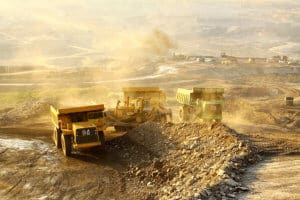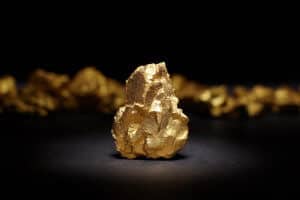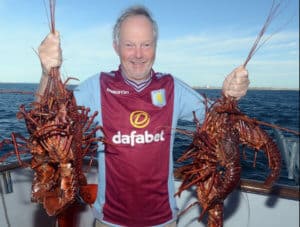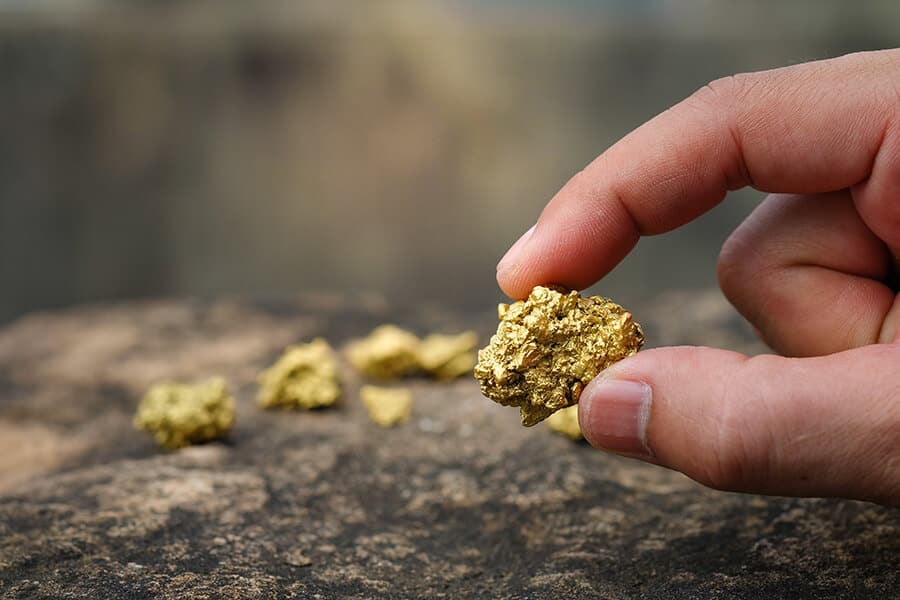Last week we published the first part of the interview with Dr. Melvyn Lintern. Here is the second and the concluding part where we continue the interview with him on gold and much more. You shall read about where one finds the most deposits of gold, the efforts involved, the depths to which one has to go to and the effects of mining on the environment.
Apart from Australia, which are the countries that have deposits of gold in significant quantities?
Australia ranks second as a global gold producer behind China, but Australia has the greatest reserves.
Australia ranks second as a global gold producer behind China, but Australia has the greatest reserves. Reserves are an estimate of the amount of gold in current ore bodies that has yet to be mined. There is some uncertainty in this figure and calculations may vary country by country. In comparison, the USA has the most gold which is kept in vaults such as Fort Knox.
This stored gold is several times greater than the total amount of gold that is mined throughout the world in any one year. European countries also have significant quantities of gold stored in vaults. The Indonesian Grasberg mine is the largest gold producer. However, the Carlin Trend area (Nevada, USA) is the home of many large gold mines and has one of the largest reserves of gold. In Australia the biggest gold producers are both in Western Australia (Boddington and the Super Pit) but the mine with the largest amount of gold is Roxby Downs (South Australia) although it is low grade (diluted by other rocks not containing gold) and is mined as a by-product of copper mining. Other large gold deposits are found in Russia, South America and South Africa.
How deep are these generally?

Gold is found in many places and where it is found determines how it is mined. Many of the world’s large gold deposits are found because they outcrop at or near the surface. These gold deposits are mined from the surface using open cut methods. Gold commonly occurs in veins in these deposits and open cut mines are large holes which get progressively deeper as the vein or lode is dug out. In these cases, most of the weathered rock surrounding the vein contains no gold, however, there is enough gold in the vein to make digging the large hole worth doing. Typically, the ore is brought to the surface by large trucks. The deeper the open cut the less profitable it is to mine in this way. If the lode or vein containing the gold goes deeper still and into fresh rock, then the mine will go to ‘underground’ operations whereby the vein is selectively mined out using a series of tunnels and shafts and high-grade gold ore trucked to the surface via underground roads or through lifts.
Some of these underground mines are several kilometres deep but these are rare as they have to be very rich in gold to justify the great expense of mining at such depths. In the other extreme, gold can be panned from rivers. As gold is very dense it tends to sort and accumulate in pockets known to the ‘alluvial miners’ where they are mined by sluicing and gravity methods.
Are there any countries that have deposits closer to the surface but are not allowed to explore due to reasons of environment?
Mining can have a deleterious effect on the environment if not carried out in a responsible and sustainable way.
Mining can have a deleterious effect on the environment if not carried out in a responsible and sustainable way. Gold operations under strict control by jurisdictions cause zero harm to the environment. However, if operations occur on an ad hoc basis serious problems can arise. For example, in the Amazon and in SE Asia, mercury may be used to collect and concentrate the gold in an amalgam. The mercury is boiled off to leave the gold behind. However, mercury commonly finds its way into rivers and stream in these high rainfall areas causing lasting damage to aquatic life. Gold miners using these techniques also suffer health effects from the mercury vapours and from eating fish contaminated with this toxic metal. While countries try to ban such operations, they are often done illegally. Another problem lies with larger mining operations that treat low grade gold ore (for example from open cut operations) with a chemical called cyanide.

While this chemical can be safely used in controlled environments, if it escapes into waterways it can lead to fish kill and other problems. Cyanide does not accumulate in the environment like mercury but has acute toxicity in small concentrations. Therefore, gold deposits found close to waterways or in areas that may experience high rainfall are susceptible to increased environmental hazards and jurisdictions are less likely to give approval to their operation in these circumstances. There is an increasing trend to use chemicals other than cyanide, such as thiosulphate, to extract the gold but they can be less efficient and less cost effective.
Tell us about your self motivation and those who inspired you into this area.
At school I was interested in science but did not really understand how I could apply this interest into a job and earn money. I was interested in animals, ecology and the environment and so I ended up doing a zoology degree. Unfortunately, there are not many openings for zoologists and so I managed to get a job in science as a Technical Assistant at the Commonwealth Scientific and Industrial Research Organisation in Western Australia in a chemical laboratory that analysed rocks and soils for metals for mineral explorers; Western Australia is the centre of the gold industry in Australia. I found this very interesting and so I stayed and worked my way up through the hierarchy to become a Research Scientist. I was given the opportunity to do a PhD in Applied Geology in gold exploration whilst still working for CSIRO. I was inspired by several of my peers to follow this line of research. CSIRO is a great organisation that fosters free thinking and encourages interaction between scientists from different disciplines e.g. plant biologists, mineral explorers, microbiologists. From my background interest in the environment and my immersion in mineral exploration, my ideas developed and inspired me to have an interest in earth processes and, in particular, those concerning gold.
When not ‘prospecting’ what do you do?
Today I went bushwalking with a local walking club. I enjoy walking in the natural environment, and to relax with like-minded friends and photograph the bush; we are blessed with large areas of forest close to Perth. I live in Perth with my wife (a keen gardener, wildflower artist and amateur botanist), a teenage daughter (studying environmental science at Curtin University) and a teenage son (just finishing school and, like me at his age, unsure what he wants to do). As a family we joined a family bushwalking group and as parents we exposed our children to the marvels of the Australian environment. We hope that it has left an impression on them. When not bushwalking, I like to play golf and chess but I am not very good at either of them!
Our readers are mainly the young from different parts of the world who look up to achievers such as yourself for inspiration. A word of advice for them?
Life is too short not to be happy so live life to the full.
Young people need to be encouraged to follow their dreams. This may be in sport, the arts or in academia. But it might not be in any of these things. It could be an idea or an area of work that interests them. When I was growing up, I found it hard to make choices in what I wanted to do – especially at school. Sometimes we are forced to make choices when we are not ready to do so. My advice to young people is to not worry about making the wrong choice since things will change as they grow older. A decision made now does not lock them into a situation for ever where there is no chance of change. Make choices now that will bring the best chance of happiness. Life is too short not to be happy so live life to the full.

Dr. Melvyn Lintern is a renowned scientist with multiples of publications to his credit who spent more than three decades with CSIRO Earth Science and Resource Engineering, Australia is a world authority, not only on gold but also other natural resources.
Photos: From the Archive of Dr. Lintern / Shutterstock
Read also the Part I of the Interview with Dr. Melvyn Lintern:
Gold Particles In Eucalyptus Leaves – With Dr. Melvyn Lintern, Part I.
Support us!
All your donations will be used to pay the magazine’s journalists and to support the ongoing costs of maintaining the site.
Share this post
Interested in co-operating with us?
We are open to co-operation from writers and businesses alike. You can reach us on our email at [email protected]/[email protected] and we will get back to you as quick as we can.









